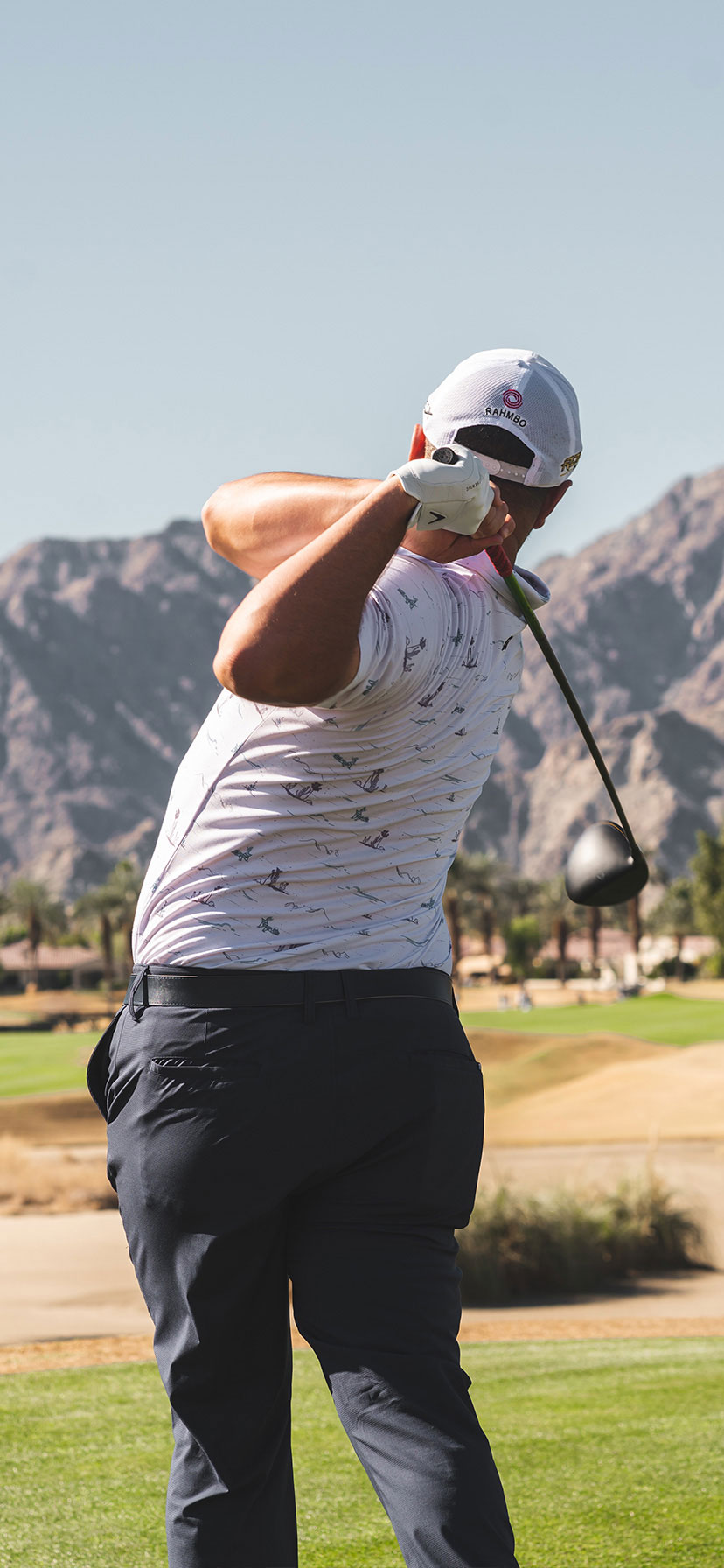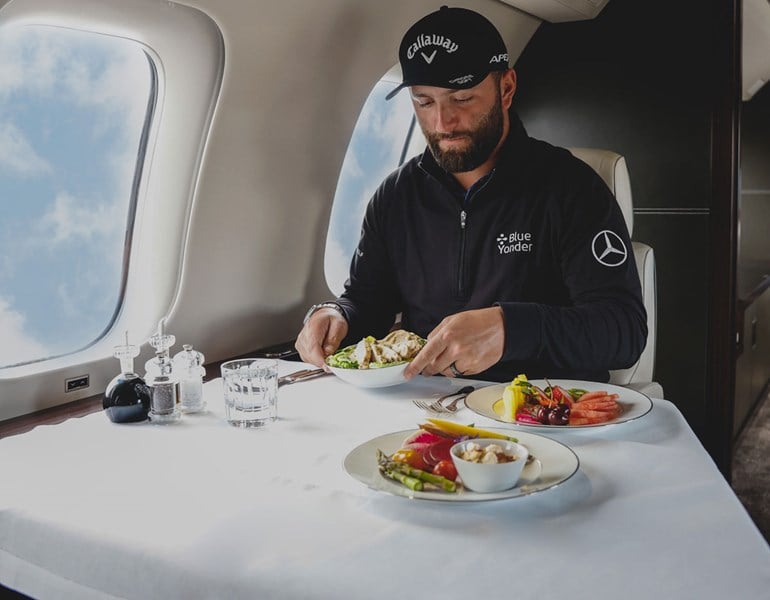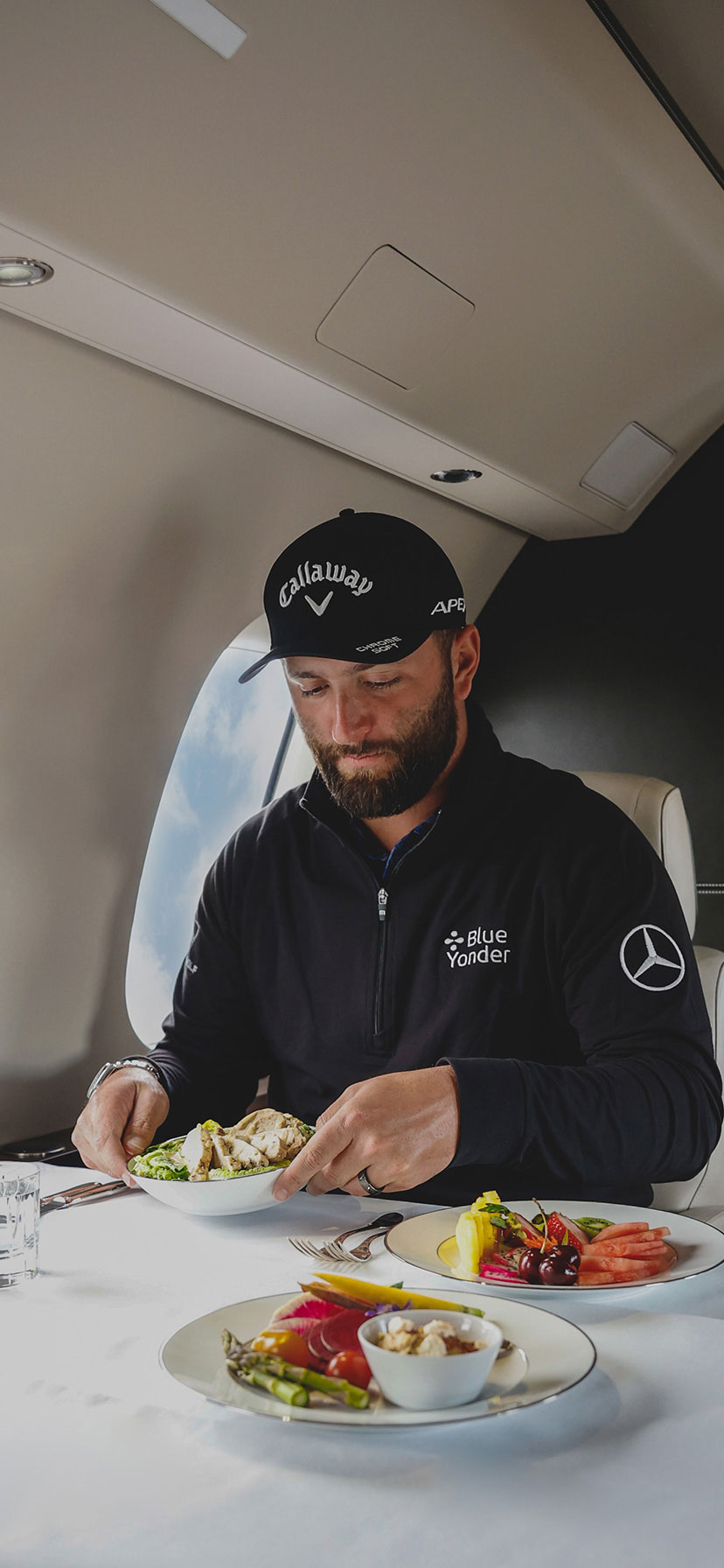There’s a saying in golf: “You drive for show, putt for dough.” Less than a decade ago, Jon Rahm was a broke student at Arizona State University relying on his putting ability to put bread on the table, figuratively and literally. When he had enough money from hustling teammates, Rahm and his then-girlfriend, now wife, Kelley Cahill, would occasionally dine at one of Tempe’s more affordable diners, which also made a mean margarita. “And she bought the drinks!” he says with a laugh. Fast-forward to the present and Rahm has recently surpassed the $40 million mark for career earnings. He also has 20 pro-tournament wins (and counting), a US Open title and a Masters Green Jacket. Not bad given Rahm only turned professional in 2016.
“It’s easy to take all this for granted,” he says. “I live in Scottsdale, Arizona, and sometimes I think this is all pretty crazy for somebody who couldn’t afford much, who had to win chip and putting contests against his teammates to be able to afford to eat. I always envisioned myself being one of the best in the world, and I had that goal in mind. But what I’ve accomplished —especially as of late— it’s quite incredible. And to not have any financial stress is a huge thing, right?”


Out of all the players, Rahm has been the most consistent off the tee lately, albeit with a swing that is shorter than his peers’. That is partly due to being born with a club foot that required multiple operations when he was a small boy growing up in Barrika, 12 miles north of Bilbao, Spain. But, as Rahm stresses, his swing is also the product of many factors, not least having coaches knowing how to maximize his natural ability. “It wasn’t like I had life-threatening surgery, but what it did was direct me on a path toward learning what my body could or couldn’t do. Although that is meaningless if you don’t have the people that understand golf to apply it to your own game.”
When he was 13, Rahm’s mother took him to meet coach Eduardo Celles. “If I took a full swing, I wasn’t accurate whatsoever. But it really, really worked when Eduardo told me to start basically swinging three quarters, to shoulder height. That was when I started winning tournaments.” He also attributes that swing to a sport known in the US as jai alai. For some readers, the only time you will have seen jai alai is for a split-second during the opening credits of Miami Vice, but it is also played in the Basque country where it is known as pelota. “They use the hook [in America], but I use the wooden paddle. If you look it up, the paddle is very similar to how I do my golf swing.”
“It wasn’t like I had life-threatening surgery, but what it did was direct me on a path toward learning what my body could or couldn’t do.”
“It wasn’t like I had life-threatening surgery, but what it did was direct me on a path toward learning what my body could or couldn’t do.”


However, as in any sport, winning and losing often come down to preparation, and creating the right environment both on and off the course. “When you’re traveling as much as we do, playing 20 tournaments in the first 34 weeks of the year, a lot of them very far away, there’s a lot of coming back and forth and you don’t want to worry about flights being delayed or clubs not turning up. But my caddy once told me, ‘Man, you gotta invest money to make money,’ and he’s the one that pushed me toward flying private. If you think of yourself as a company and you are the asset, to invest in your body, to make sure you are rested and physically fit to be able to play, is just so important.
I’m six feet three inches. You know, I don’t really want to be sitting in the middle seat, shoulder to shoulder with other passengers!” he jokes. “And I’m pretty sure I spend almost as many hours sleeping on the jet as I do in my own bed at home. Also, it means I get to spend more time with my family as we fly together.” Rahm and Cahill have two young children, Kepa and Eneko, so the extra hours he gets with them are invaluable.
This has clearly been a significant year for the sport—and especially for Rahm, who has gone into each major as one of the favorites. But as we have an audience with probably the best golfer in the world right now, we would be remiss not to ask for one tip on behalf of the reader that will improve your game. And Rahm’s answer brings us back to where we started: a putter.
“If you’re not the best, the one thing you can practice the most, that could help you in the long run, is putting. If you can save as many shots as you can, inside six feet, those shots start adding up. You can find a million drills online about how to practice those putts. Maybe just dedicate 20 minutes on the putting green instead of hitting 1,000 golf balls. And this applies to a 20 handicapper as well as to every player on tour right now.”
Or even somebody trying to hustle their way through college on a diet of tacos and tequila.